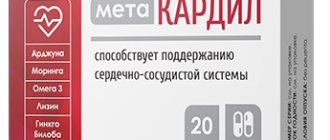What it is?
The body is a mechanism in which complex processes occur every day. The patient does not notice this and continues with his daily routine. These processes are responsible for the proper functioning of organs and internal systems and maintaining health. One of the important processes for the body is pressure.
When the internal balance is disturbed, a person begins to experience unpleasant feelings. Therefore, to maintain health, it is never suitable to pay due attention to all types of internal pressure. First of all, this relates to intracortical pressure. The increase in pressure inside the abdominal cavity is called intrazonal hypertension (IAH). The disease develops as a result of abnormal functioning of the lungs, hearts, kidneys and intestines.
If a person is healthy, indebile pressure varies from 0 to 5 mm Hg. - This is the norm. In an adult patient in critical condition, this figure can rise to 7 mmHg. The increase is observed in several other concerns about the body's concerns - obesity and childbirth. In this case, the pressure indicator does not go beyond 10-15 mmHg.
The patient’s body has time to adapt to new conditions, and this does not affect his health. As a result of surgery, that is, the abdominal cavity, the device will display 13 mmHg. Such values do not threaten the patient's life in such conditions. It is impossible to talk about a forcible increase in pressure without any important reasons.
Measurement methods
To measure intrabacal pressure, one of two existing methods is used:
- catheter;
- Surgical method.
In the first case, a catheter is used, which is introduced into the patient through the bladder. It is considered less informative than the surgical method. This applies when the second is not possible. In this case there should be no complications.
Measuring internal pressure using a surgical method is possible during surgery. The doctor places a special sensor in the abdominal gown, which after a while shows the pressure level. The measuring device can also be placed on the liquid colon. This has good information value. Decreased or increased values indicate the development of a pathological process in the human body.
If you begin to notice characteristic symptoms, you should ask your doctor.
Heartburn due to coronavirus
With COVID-19, painful gastrointestinal symptoms, including heartburn, are caused by several factors.
- The coronavirus enters the gastrointestinal tract and provokes functional changes.
- Patients experience significant stress during their illness.
- With COVID-19, chronic diseases often worsen, and in our country up to 85% have problems with the gastrointestinal tract.
- Due to the frequent gastrointestinal symptoms, the “delta” strain of coronavirus has already been called “stomach covid.”
Important! Heartburn with coronavirus, especially in combination with severe weakness, increasing shortness of breath and worsening cough, may indicate a severe course of the disease.
Recent studies have shown that over the next year, patients who have recovered from COVID-19 have a significantly increased risk of developing diabetes mellitus, autoimmune gastrointestinal diseases and psychosomatic disorders, including gastric ulcers. Therefore, if heartburn occurs, patients recovered from coronavirus should visit a gastroenterologist.
Important! Information has appeared in the press that the heartburn drug Famotidine improves the well-being of patients with coronavirus. However, only 10 people participated in the study, and therefore it is premature to talk about the effectiveness of this drug and its safety against COVID-19. We strongly advise against taking Famotidine on your own without a doctor’s prescription.
Clinical picture
Indicators are observed frequently. At the same time, irrelevant changes are not disclosed in any way. This is not a sign of a serious illness.
Significant changes in the previous pressure value look like this:
- feeling of gravity in the stomach area;
- weakness and dizziness;
- High blood pressure;
- Nausea, often leading to vomiting;
- Rattling and shaking in the stomach;
- incomplete defecation files;
- dull or painful pain;
- bloating;
- Bloody abdominal cavity.
If there is a block of Peter's hypertension, it is difficult to determine. Nonspecific symptoms are not enough. To make an accurate diagnosis, the patient must be subjected to a complete examination. Based on the data obtained, the doctor makes a diagnosis and prescribes treatment.
The patient may have specific symptoms, in addition to general symptoms. The strength of their manifestation and nature depends on the reason for which the disease developed. Regardless, it is contraindicated to have the patient perform self-healing. This can not only lead to complications, but also cause death if emergency medical care is not provided.
Diagnosis of heartburn
Recommended Laboratory Tests
- General blood analysis.
- Biochemistry and liver tests.
- Test for antibodies to Helicobacter pylori.
- Coprogram.
Instrumental studies
- Urease breath test for Helicobacter.
- FGDS with the possibility of taking a biopsy (to exclude cancer).
- Ultrasound, X-ray with contrast agent and CT.
- Esophageal pH monitoring, esophageal manometry.
If necessary, the patient is referred to an endocrinologist, pulmonologist, cardiologist and other highly specialized specialists.
Treatment
It is difficult to make a valid diagnosis based on the symptoms listed. Other diseases may also have the same set of warning symptoms. To make an accurate diagnosis, you need to see a doctor who will conduct all the necessary diagnostic examinations and tests. First of all, two factors are considered that determine the cause and severity of the disease.
To confirm the diagnosis, the patient is given an umbrella, which is inserted rectally. During the procedure, the patient does not feel pain, only slight discomfort is possible. This method is used to measure performance. It cannot be used to reduce intra-abdominal pressure.
If the patient does not ignore the symptoms and begins treatment as soon as possible, this will stop the first stage of the disease. In this case, the patient will avoid complications in the form of multiple organ failure. The duration of therapy depends on the stage of the disease. In this case, treatment is carried out using several methods:
- Conservative treatment - medications and physiotherapeutic procedures.
- Radical - surgical intervention.
If the patient complains of being unwell and has serious complaints, an immediate diagnosis is carried out. In this case, IAP is measured. If it exceeds 25 mmHg. St., urgent surgery is required. Abdominal surgery is used.
Drug therapy and physiotherapeutic methods
It contains the following drugs:
- sedatives;
- painkillers;
- muscle relaxants.
Vitamins and mineral complexes are prescribed to maintain the function of the digestive tract.
Physiotherapeutic procedures are carried out after the main treatment. They help stabilize water and electrolyte balance in the body. This may be the installation of a drainage tube or an enema with medicinal decoctions. Diuresis stimulation is often used.
Factors that increase intra-abdominal pressure should be avoided. The patient should not wear tight-fitting clothing; it is better to choose a loose fit. To protect your health, avoid over-tightening your trouser belt. The lying position should be at least 20 degrees.
Avoid exercises that require you to lift heavy weights (more than 10 kg). The abdominal muscles should also be protected from excessive tension. The patient is advised to avoid exercise. A varied diet will help keep the body in a stable state.
Nutrition for the patient
The diet is selected individually for each case. In this case, general recommendations are taken into account:
- During the day you should drink at least 2 liters of liquid in any form, including first courses.
- Meals should be shared. Take in small portions every 2-3 hours.
- The consistency of cooked food should be either puree or liquid.
- Completely eliminate foods that cause increased gas formation from your diet.
High abdominal pressure is a result of obesity. Uncontrolled consumption of harmful foods poisons the body. When IAP is detected in patients with this problem, a diet is prescribed. A set of physical exercises has been developed to normalize weight.
In case of increased or decreased IAP, the first step is to promptly seek medical help.
In this case, you can not only cure the disease at an early stage, but also avoid complications. Preventative measures aimed at strengthening the entire body play an important role. If you have chronic diseases, attend physiotherapeutic procedures from time to time.
Results and discussion
Indicators of IAP, APACNE II, BPD and FG
The values of IAP in patients of the studied groups are presented in Fig. 1
.
Figure 1. Indicators of IAP in patients with AP.
Here and in Fig. 2, 4 and 5: NO - organ failure, other designations in the text. In patients of groups 1-3 on day 1, IAP levels did not differ significantly and corresponded to grade 1 IAP, whereas in patients of group 4, IAP was significantly higher and corresponded to grade 2 IAP. In patients of the 1st group, normalization of IAP occurred already by the 3rd day, in patients of the 2nd group - after the 3rd day (by the 7th day, IAP was normal). In patients of the 3rd group, the level of IAP significantly increased by days 3-5 (2nd degree of IAP); in the absence of significant differences with the 1st and 2nd groups, there was a clear tendency to increase IAP on the 7th day. In patients of group 4, grade 2 IAH persisted on days 3 and 5; on day 7, there was a significant increase in the indicator to grade 3. In Fig. 2
The indicators of the APACHE II scale in patients of different groups are presented.
Figure 2. Indicators of the APACHE II scale in patients with AP. Already on the 1st day, in patients of groups 2-4 with manifestations of organ failure, in contrast to patients of group 1, values corresponding to the severe course of the disease were noted. The highest levels were in the 4th group. Over time, patients in groups 1 and 2 showed a decrease in the APACHE II index, while in groups 3 and 4 (despite the treatment) it increased by the 5th and 7th days. Significant differences in indicators were noted during all periods of observation between the data obtained in groups 1, 3, and 4. There was a significant ( p
<0.01) average direct correlation (
r
=0.57) between the indicators of IAP and the APACHE II scale
(Fig. 3)
.
Figure 3. Correlation between IAP and APACHE II scores in patients with AP.
Thus, IAH reflects the severity of the patients’ condition to the same extent as the APACHE II scale index. In Fig. 4 and 5
the dynamics of BPD and FG in patients of different groups is presented (in patients of groups 3 and 4, vasoactive drugs were used to maintain adequate hemodynamics).
Figure 4. BPD indicators in patients with AP.
Figure 5. FG indicators in patients with AP. There was a significant decrease in FG and a trend towards a decrease in BPD in patients of group 4, which confirms the thesis about the influence of reduced BPD and FG on the development of renal failure.










